Lorenzo Miretti
Two-timescale weighted sum-rate maximization for large cellular and cell-free massive MIMO
Jul 08, 2024Abstract:We reconsider the problem of joint power control and beamforming design to maximize the weighted sum rate in large and potentially cell-free massive MIMO networks. In contrast to the available short-term methods, where an iterative algorithm is run for every instantaneous channel realization, we derive an iterative algorithm that can be run only sporadically leveraging known channel statistics, with minor performance loss. In addition, our algorithm also applies to the design of non-trivial cooperative beamforming schemes subject to limited sharing of instantaneous channel state information. Furthermore, our algorithm generalizes and outperforms the competing long-term methods from the massive MIMO literature, which are restricted to long-term power control only or to long-term joint power control and large-scale fading decoding design.
Unlocking the Potential of Local CSI in Cell-Free Networks with Channel Aging and Fronthaul Delays
Apr 19, 2024Abstract:It is generally believed that downlink cell-free networks perform best under centralized implementations where the local channel state information (CSI) acquired by the access-points (AP) is forwarded to one or more central processing units (CPU) for the computation of the joint precoders based on global CSI. However, mostly due to limited fronthaul capabilities, this procedure incurs some delay that may lead to partially outdated precoding decisions and hence performance degradation. In some scenarios, this may even lead to worse performance than distributed implementations where the precoders are locally computed by the APs based on partial yet timely local CSI. To address this issue, this study considers the problem of robust precoding design merging the benefits of timely local CSI and delayed global CSI. As main result, we provide a novel distributed precoding design based on the recently proposed team minimum mean-square error method. As a byproduct, we also obtain novel insights related to the AP-CPU functional split problem. Our main conclusion, corroborated by simulations, is that the opportunity of performing some local precoding computations at the APs should not be neglected, even in centralized implementations.
Fixed-point methods for long-term power control and beamforming design in large-scale MIMO
Dec 07, 2023Abstract:This study presents novel applications of fixed-point methods to solve previously open joint power control and beamforming design problems in modern large-scale MIMO systems, e.g., based on the cell-free massive MIMO and XL-MIMO concepts. In particular, motivated by the need for scalable system architectures, we revisit the classical sum power minimization and max-min fair design criteria by considering long-term power control and beamforming design based on channel statistics and possibly limited channel state information (CSI) sharing across distributed processing units. This approach is believed to mitigate the severe scalability issues of competing short-term optimal algorithms in the literature, which must be executed for every channel realization by a central controller endowed with global CSI, hence imposing very demanding requirements in terms of computation and interconnection capabilities. The obtained optimal algorithms are then illustrated and compared against existing short-term and long-term approaches via numerical simulations in a cell-free massive MIMO setup.
Robust cell-free mmWave/sub-THz access using minimal coordination and coarse synchronization
Aug 04, 2023Abstract:This study investigates simpler alternatives to coherent joint transmission for supporting robust connectivity against signal blockage in mmWave/sub-THz access networks. By taking an information-theoretic viewpoint, we demonstrate analytically that with a careful design, full macrodiversity gains and significant SNR gains can be achieved through canonical receivers and minimal coordination and synchronization requirements at the infrastructure side. Our proposed scheme extends non-coherent joint transmission by employing a special form of diversity to counteract artificially induced deep fades that would otherwise make this technique often compare unfavorably against standard transmitter selection schemes. Additionally, the inclusion of an Alamouti-like space-time coding layer is shown to recover a significant fraction of the optimal performance. Our conclusions are based on an insightful multi-point intermittent block fading channel model that enables rigorous ergodic and outage rate analysis, while also considering timing offsets due to imperfect delay compensation. Although simplified, our approach captures the essential features of modern mmWave/sub-THz communications, thereby providing practical design guidelines for realistic systems.
Characterization of the weak Pareto boundary of resource allocation problems in wireless networks -- Implications to cell-less systems
Apr 27, 2023

Abstract:We establish necessary and sufficient conditions for a network configuration to provide utilities that are both fair and efficient in a well-defined sense. To cover as many applications as possible with a unified framework, we consider utilities defined in an axiomatic way, and the constraints imposed on the feasible network configurations are expressed with a single inequality involving a monotone norm. In this setting, we prove that a necessary and sufficient condition to obtain network configurations that are efficient in the weak Pareto sense is to select configurations attaining equality in the monotone norm constraint. Furthermore, for a given configuration satisfying this equality, we characterize a criterion for which the configuration can be considered fair for the active links. We illustrate potential implications of the theoretical findings by presenting, for the first time, a simple parametrization based on power vectors of achievable rate regions in modern cell-less systems subject to practical impairments.
UL-DL duality for cell-free massive MIMO with per-AP power and information constraints
Jan 16, 2023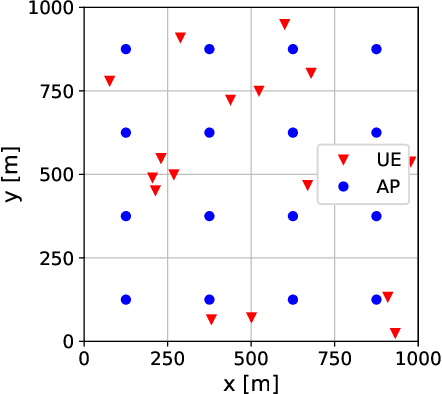
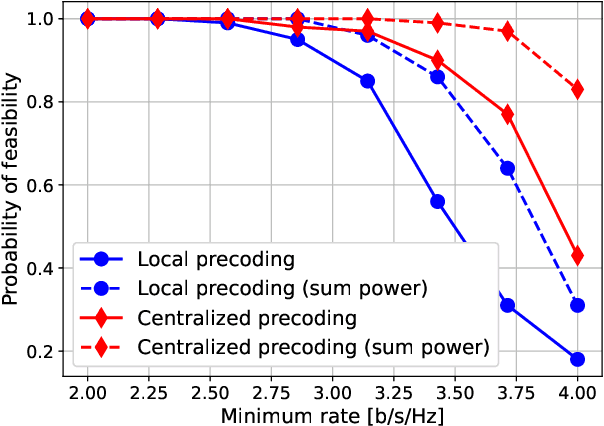
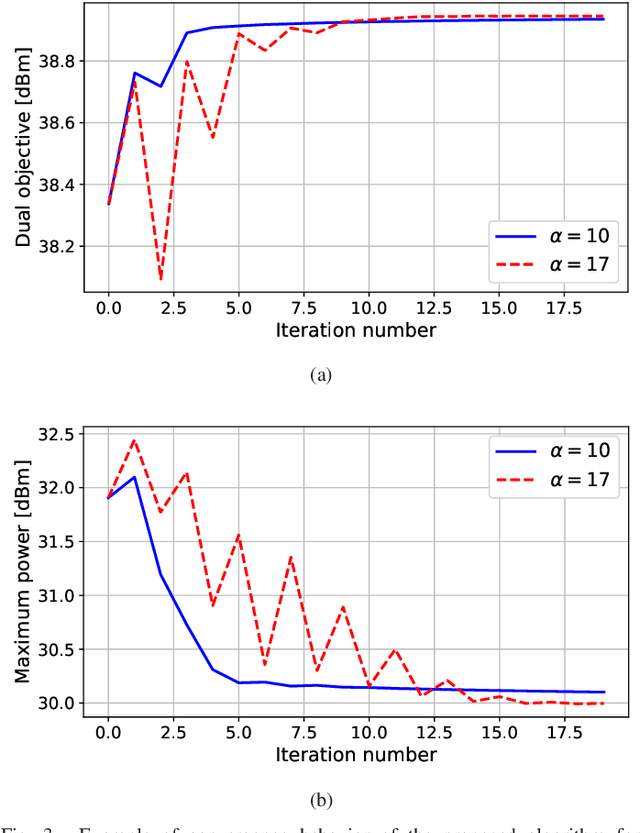
Abstract:We derive a novel uplink-downlink duality principle for optimal joint precoding design under per-transmitter power and information constraints in fading channels. The main application is to cell-free networks, where each access point (AP) must typically satisfy an individual power constraint and form its transmit signal on the basis of possibly partial sharing of data bearing signals and channel state information. Our duality principle applies to ergodic achievable rates given by the popular hardening bound, and it can be interpreted as a nontrivial generalization of a previous result by Yu and Lan for deterministic channels. This generalization allows us to cover more involved information constraints, and to show that optimal joint precoders can be obtained using a variation of the recently developed team minimum mean-square error method. As particular examples, we solve the problems of optimal centralized and local precoding design in user-centric cell-free massive MIMO networks subject to per-AP power constraints.
Little or no equalization is needed in energy-efficient sub-THz mobile access
Oct 11, 2022
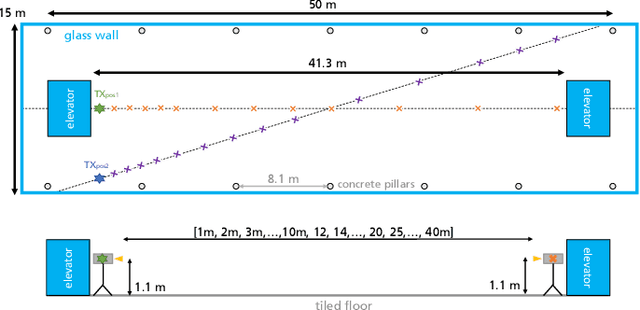
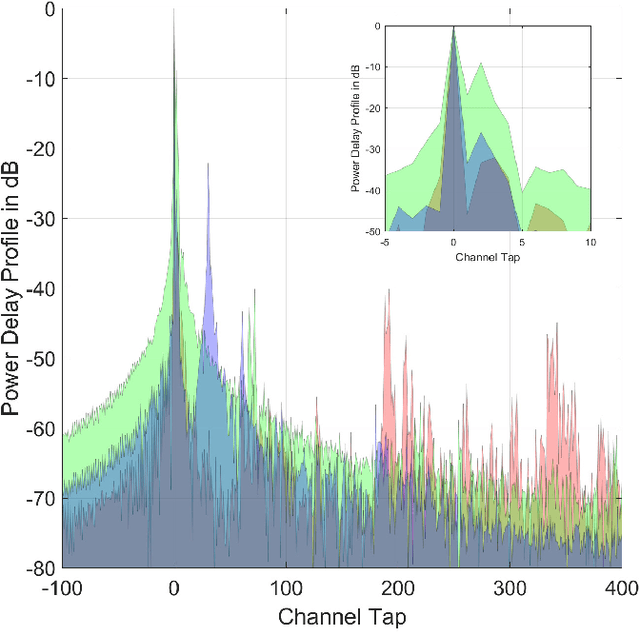
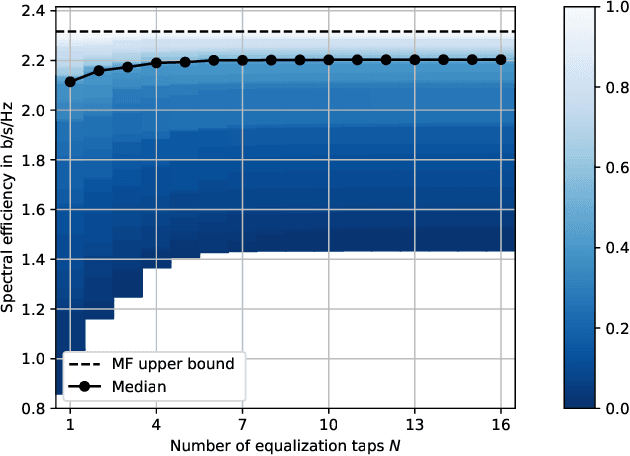
Abstract:By trading coverage and hardware complexity for abundance of spectrum, sub-THz mobile access networks are expected to operate under highly directive and relatively spectrally inefficient transmission regimes, while still offering enormous capacity gains over current sub-6GHz alternatives. Building on this assumption, and supported by extensive indoor directional channel measurements at 160 GHz, this study advocates the use of very simple modulation and equalization techniques for sub-THz mobile access. Specifically, we demonstrate that, under the aforementioned transmission regimes, little or no equalization is needed for scoring significant capacity gain targets. In particular, we show that single-carrier or low-number-of-subcarriers modulations are very attractive competitors to the dramatically more complex and energy inefficient traditional multi-carrier designs.
Team Precoding Towards Scalable Cell-free Massive MIMO Networks
Aug 24, 2022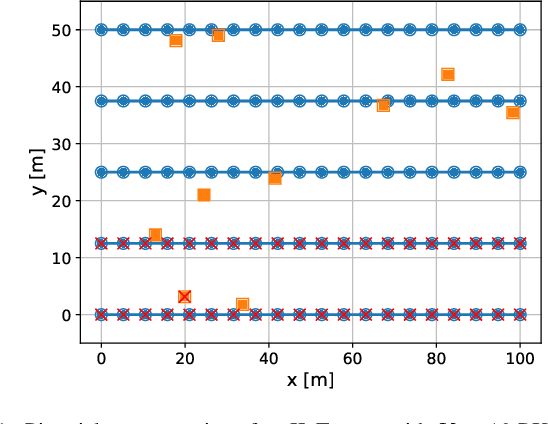
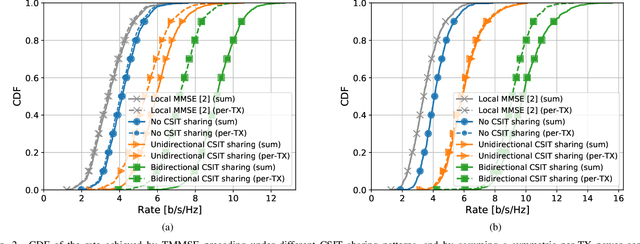
Abstract:In a recent work, we studied a novel precoding design for cell-free networks called team minimum mean-square error (TMMSE) precoding, which rigorously generalizes centralized MMSE precoding to distributed operations based on transmitter-specific channel state information (CSI). Despite its flexibility in handling different cooperation regimes at the CSI sharing level, TMMSE precoding assumes network-wide sharing of the data bearing signals, and hence it is inherently not scalable. In this work, inspired by recent advances on scalable cell-free architectures based on user-centric network clustering techniques, we address this issue by proposing a novel version of the TMMSE precoding design covering partial message sharing. The obtained framework is then successfully applied to derive a variety of novel, optimal, and efficient precoding schemes for a user-centric cell-free network deployed using multiple radio stripes. Numerical simulations of a typical industrial internet-of-things scenario corroborate the gains of TMMSE precoding over competing schemes in terms of spectral efficiency under different power constraints. Although presented in the context of downlink precoding, the results of this paper may be applied also on the uplink.
Joint optimal beamforming and power control in cell-free massive MIMO
Aug 11, 2022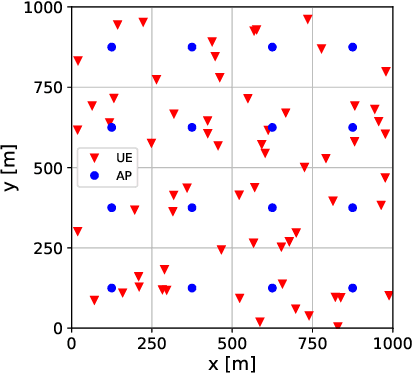
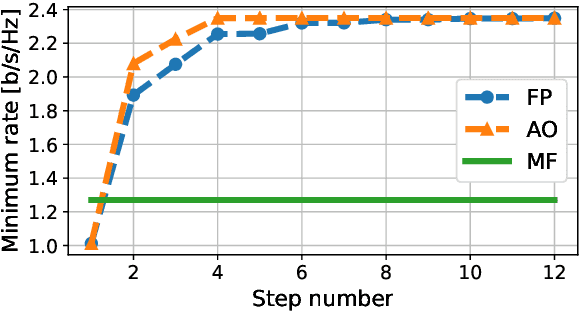
Abstract:We derive a fast and optimal algorithm for solving practical weighted max-min SINR problems in cell-free massive MIMO networks. For the first time, the optimization problem jointly covers long-term power control and distributed beamforming design under imperfect cooperation. In particular, we consider user-centric clusters of access points cooperating on the basis of possibly limited channel state information sharing. Our optimal algorithm merges powerful power control tools based on interference calculus with the recently developed team theoretic framework for distributed beamforming design. In addition, we propose a variation that shows faster convergence in practice.
Closed-form max-min power control for some cellular and cell-free massive MIMO networks
May 03, 2022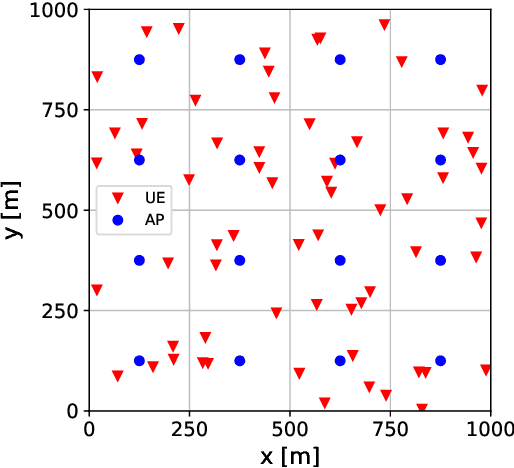
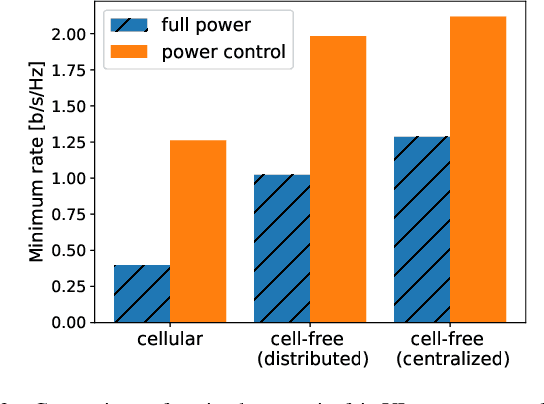

Abstract:Many common instances of power control problems for cellular and cell-free massive MIMO networks can be interpreted as max-min utility optimization problems involving affine interference mappings and polyhedral constraints. We show that these problems admit a closed-form solution which depends on the spectral radius of known matrices. In contrast, previous solutions in the literature have been indirectly obtained using iterative algorithms based on the bisection method, or on fixed-point iterations. Furthermore, we also show an asymptotically tight bound for the optimal utility, which in turn provides a simple rule of thumb for evaluating whether the network is operating in the noise or interference limited regime. We finally illustrate our results by focusing on classical max-min fair power control for cell-free massive MIMO networks.
 Add to Chrome
Add to Chrome Add to Firefox
Add to Firefox Add to Edge
Add to Edge